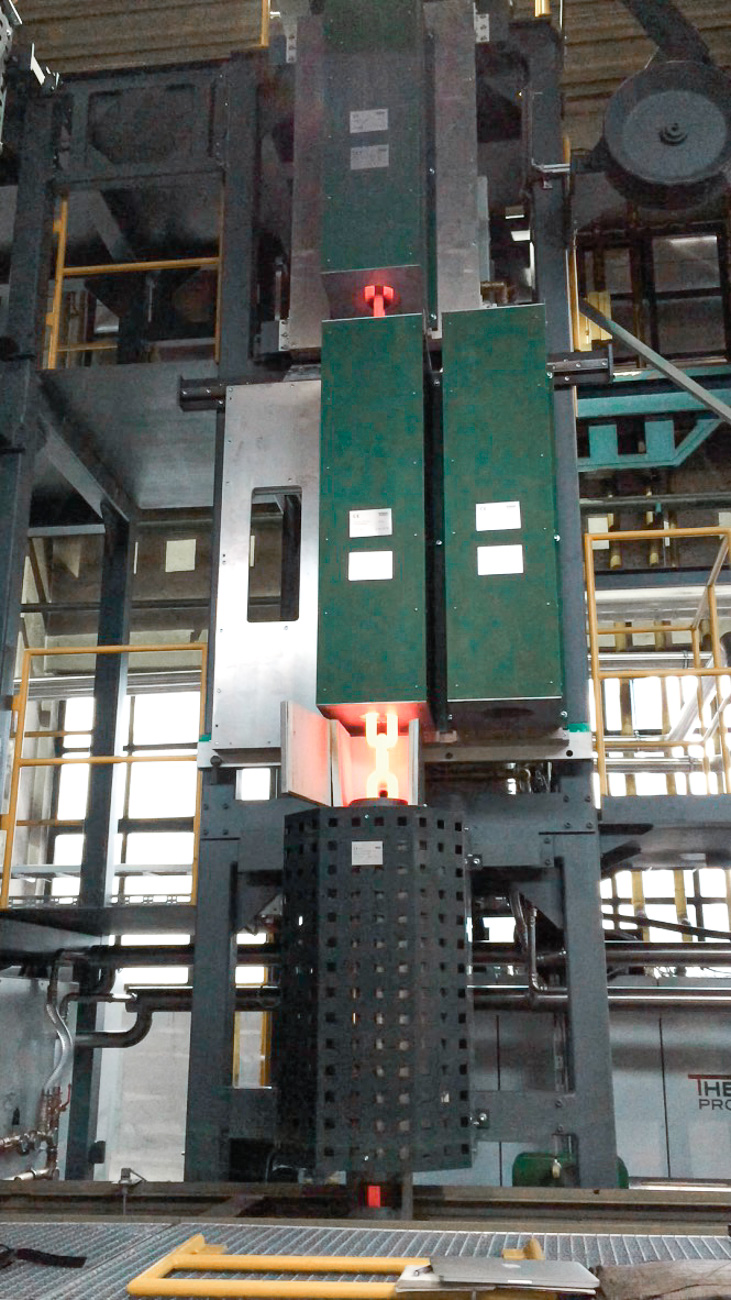Chains In-Line tempering and hardening
SCT | SMART CHAIN TREATMENT
Why tempering ?
chains achieve their physical properties only after a thermal quenching and tempering process has been carried out. In the case of a chain, the arc must be hard on the inside to reduce wear. At the same time, the leg area must have a certain crack toughness and a brittle fracture must be avoided.
Procedural steps
In order to achieve appropriate properties here, two or three process steps are required for continuous quenching and tempering. The following process steps must be performed:
- Hardening
- Start
- Thigh tempering
Thermal hardening
Hardening separates according to chain diameter. For smaller chains – typically hoist chains – a simple induction zone with subsequent Quenschen in water is usually sufficient. The temperature distributions achieved are sufficient for the process. In order to achieve a sufficiently good temperature distribution for larger mining chains, we divide the heating zone into three zones. As shown in the figure, the chain is heated in the first zone to approx. 700 °C (below the material-specific Curie temperature). Afterwards, the chain is heated to a hardening temperature of 920 °C with an adjusted frequency. In the third zone, the SLZ – SMART LEVELING ZONE, the temperature distribution is compensated to less than +/- 5 K.
Quests
The subsequent quenching process, which is carried out with a spray and immersion in water or polymer solution, then hardens the chain raw material. However, this hardness distribution still shows relatively strong fluctuations.
Starting
In the subsequent tempering process, the hardness is uniformly adjusted over the entire chain link. This process step requires an inductive preheating zone and another SLZ – SMART LEVELING ZONE. The latter is only required for higher chain qualities. After tempering, the chain is cooled again in the immersion tank. This is particularly important before thigh tempering.
Tempering special parts of the chain
Specially for mining chains, a third process is carried out in which the hardness in the leg area is additionally reduced. The additional third process can increase the service life of the chains.
Range of services
ThermProTEC offers the optimum complete solution for this type of application for chain sizes D4 to D60. This includes process development, individual plant design and delivery of the entire line including inductive heating systems, SLZ systems, chain transport, quench design with filter and pump technology, quality monitoring systems as well as the palletizing system at the end of the line. ThermProTEC is one of the technology leaders for this type of system with a large number of installed systems worldwide. For the drive technology, the optimum transport technology is used for each chain size. For large mining chains, for example, we use specially developed clamping wheels that do not require any scaffolding.
You are interested, have questions or suggestions?
Our team is at your disposal. We look forward to your message!
Zunftstr. 20 | 77694 Kehl-Marlen | DE

Related products:

Useful links
Contact